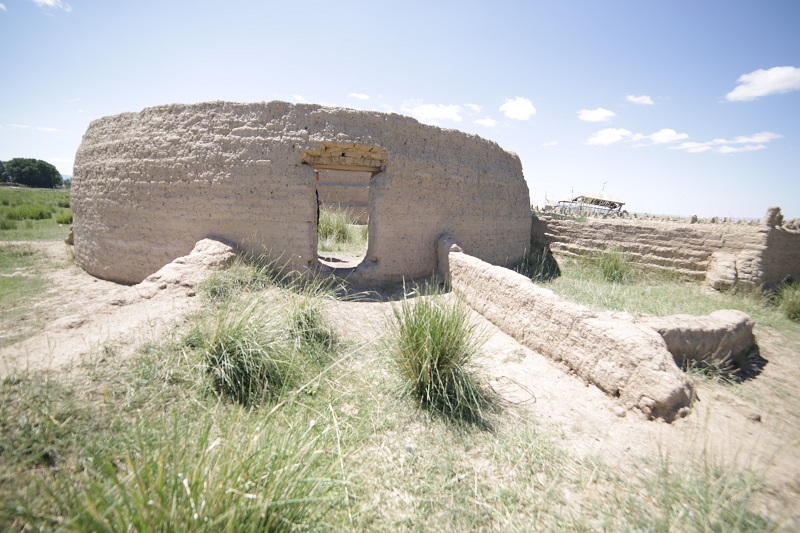© 2026. anyz.pushkinlibrary.kz All rights reserved.
Screen reader

In the endless steppe of the Kurchum region rises a lonely mazar, shrouded in legends and myths. It reminds people of the frailty of life on earth and preserves the peace of the person who is buried here. Locals call the mazar Amanat. The village located nearby has the same name. There is an ancient legend in the steppe about the history of the appearance of the mazar and its name.
…These events took place in the year of the white mouse. It is remembered in the Steppe as the time of great jute. Here, in the foothills of Altai, in search of winter pastures, herds of thousands of people were driven from the distant banks of the Syr Darya. The herds safely survived the huge transition and were stopped in a valley called Myn shunkyr, which translated from Kazakh means Valley of a Thousand Graves.
Here the people fleeing the jute were caught in the winter, and they decided to stay in the valley until spring. In addition, these places turned out to be rich in pasture; rocks protected them from cold winds. The herd was led by a young man, the son of a bai. He was the only heir in the family, and the father did not want to send his son on a long dangerous journey, but the guy himself saddled the horse and was adamant in his decision to protect the horses.
Day after day, people from the banks of the Syr Darya guarded their herds, waiting for the snow to melt, green grass to appear, and it would be possible to set off on their way back to their homeland. But when this day was already very close, a disaster happened: the young warrior’s horse, at full gallop, hit one of the graves with its foot and fell to the ground along with its rider. Batyr, who was seriously injured, was brought to the parking lot by his friends in their arms. People fought for a long time for the life of the heir, but to no avail.
The death occurred at a time when the spring days were already warm, and it was impossible to bring the body of the deceased home. Therefore, a courier went there with the bad news.
Having learned about the death of his only son, the bai and his relatives arrived in the Valley of a Thousand Graves. Overcome with grief, he ordered the manes and tails of all the horses saved from the jute to be shorn. Then people mixed a huge amount of horsehair with clay, which was poured with mare’s milk. From the resulting mass, bricks were cast and a mazar was built from them on the grave of the young man.
As the legend says, for forty days people who came from afar mourned the death of their only heir. Then, when they were getting ready to go back, the bai turned to the local residents with his amanat (testament) to keep his son’s mazar.
After this, the mazar began to be called Amanat. The nearby ancient village of Amanat can still be found on the map of the area.
The legend, apparently, has a real basis. There is a geographical area, a settlement. By the way, in the Valley of a Thousand Graves itself, as people who have been there say, there is a certain depressing aura.
The explanation can be found in the history of the region. It was this valley that once became the site of the battle between Kazakhs and the Dzungars. In that fierce battle,
more than a thousand warriors on both sides died in this valley. That’s why people gave it the name “A Thousand Graves”. Not far from the valley there is a place called “Oiran”, which translates as “Carnage”. This name is a direct reflection of history: warriors also fought here in battle.
© 2026. anyz.pushkinlibrary.kz All rights reserved.
Screen reader
Write to us, we will contact you as soon as possible